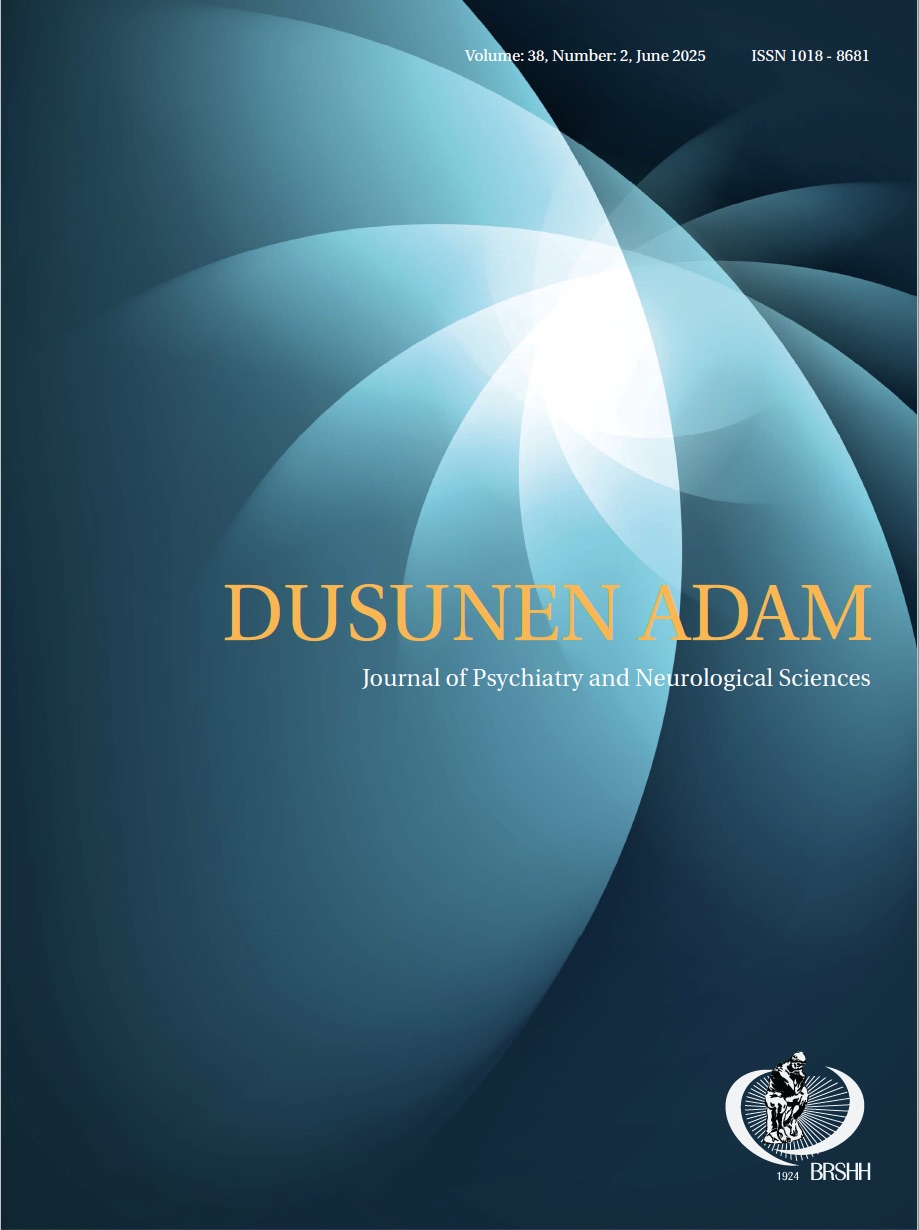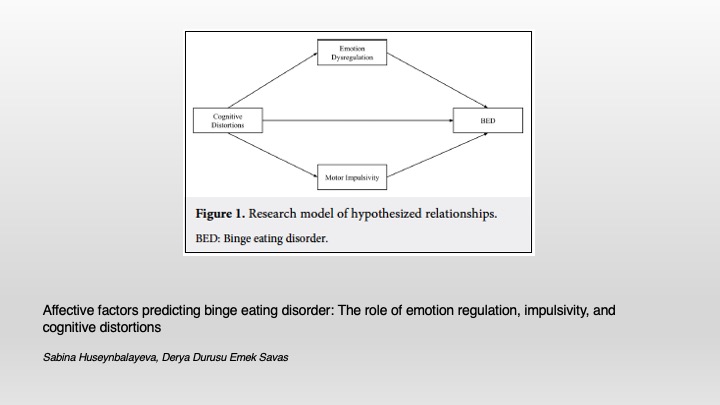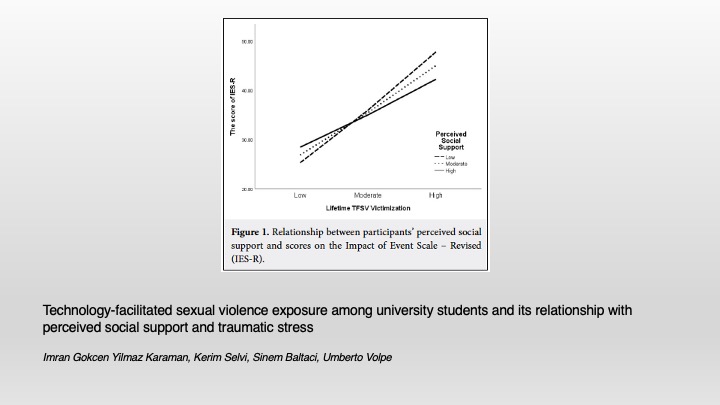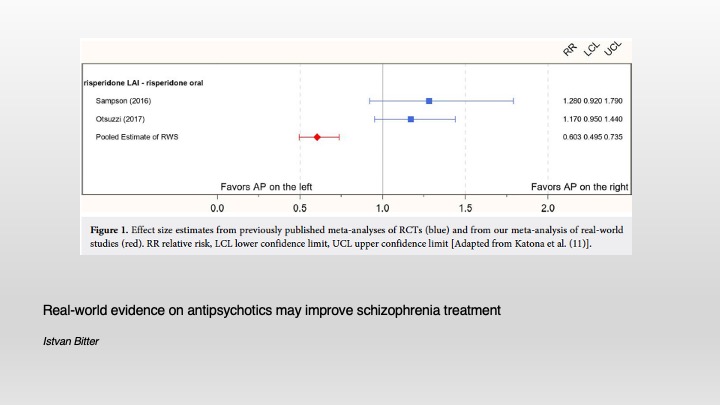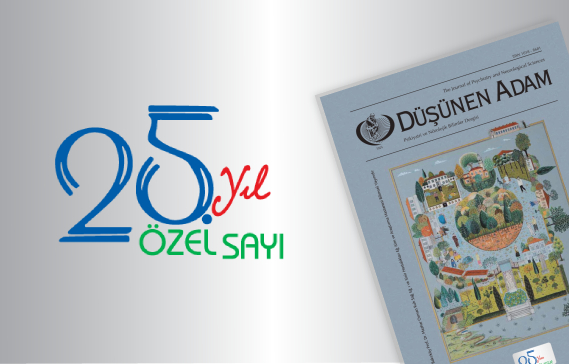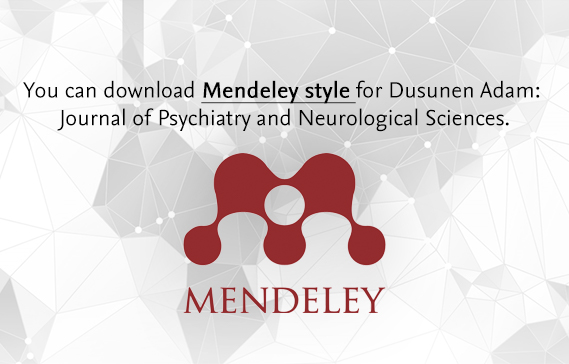2Dicle University, Faculty of Medicine, Department of Pediatric Allergy and Immunology, Diyarbakir - Turkey
3Diyarbakır Children’s Diseases Hospital, Department of Pediatric Allergy and Immunology, Diyarbakir - Turkey
Abstract
Objective: The mothers of children diagnosed with atopic dermatitis (AD) may be impacted in many different ways. Aim of the present study was to compare quality of life, anxiety, depression, and alexithymia symptoms between mothers of children diagnosed with AD and mothers of healthy children.
Method: The study included 34 mothers of children who were diagnosed with AD between June 2012 and July 2013 and 35 mothers of healthy children. In the study, Short Form 36 (SF-36) Health Survey was used to evaluate quality of life, while the Toronto Alexithymia Scale (TAS) was used to evaluate alexithymia level, the State-Trait Anxiety Inventory (STAI) was used to evaluate anxiety symptoms, and the Beck Depression Scale (BDS) was used to evaluate depression symptoms.
Results: There was no statistically significant difference between the mothers of AD patients and control subjects in terms of quality of life, anxiety, depression, and alexithymia. In addition, there was no significant difference in disease severity or symptoms scale scores between the two groups.
Conclusion: These results may suggest that mothers’ mental health is not affected in the early stage of the disease. In later stages of the disease, mothers of children with AD may become psychologically affected. Long-term follow up studies are required to clarify this distinction.
INTRODUCTION
Atopic dermatitis (AD) symptoms often begin during infancy and early childhood. AD is a chronic inflammatory skin disorder characterized by intense itching episodes, lichenification, dry skin, and cutaneous infections (1). In 90% of patients, the disease manifests in the first five years of life. A remarkable increase in disease prevalence has been observed over the last 30 years (2).
Early skin lesions associated with AD may be detrimental to the satisfaction of the children’s physical and psychological needs such as hugging and stroking. As a result, this condition may contribute to an impaired attachment between the mother and the child and increased AD severity. In addition, maternal psychiatric conditions such as anxiety or depression have also been reported to impair healthy attachment between mother and child and to increase the severity of AD symptoms (3).
Chronic illnesses occurring in children are frequently a source of psychological stress for their parents. Similarly, AD has a strong influence on the emotional and social wellbeing of families (4). Mothers become stressed if they believe that they are not able to care for their children appropriately (5). Previous studies have suggested that mothers of children with AD may view themselves as overprotective as a result of ongoing depression, hopelessness, and anxiety (6).
AD may be accompanied by behavioral problems, fears, and sleep disorders in children. Family members may view affected children as troubled, poorly behaved, and irritable. Sleep disorders accompanying AD have been shown to increase anxiety and depression in the mothers of affected children (7,8).
AD is a chronic disease with exacerbations requiring a long treatment course involving high costs. The child and/or the mother as the caregiver may be affected. This study aims to evaluate the mothers of children diagnosed with AD in terms of psychiatric disorders and to support early initiation of treatment in case of psychopathology.
We aimed to assess the quality of life (QoL), anxiety and depression levels of the mothers of children with AD and investigate the association of these parameters with the severity and duration of AD. In addition, we explored the presence of alexithymia among mothers of children with AD, since the expression of emotions by mother is related with the perceived stress in children.
METHOD
The study was conducted at the Department of Pediatric Allergy-Immunology at Dicle University. The study included the mothers of 34 children who were diagnosed with AD between June 2012 and July 2013 and 35 mothers of healthy children admitted to our pediatrics outpatient clinic who were recruited randomly. The diagnosis of AD was based on previously described diagnostic criteria, and disease severity was determined using the SCORAD index (9,10). The participants who were eligible to participate in the study completed a data form containing questions regarding sociodemographic and clinical features, the Beck Depression Scale (BDS), State-Trait Anxiety Inventory (STAI), Toronto Alexithymia Scale (TAS), and the Short Form 36 (SF 36). Individuals who were unable to read and understand the questionnaire were excluded from the study. All participants provided written informed consent. The study was reviewed and approved by the Non-Interventional Clinical Research Ethics Committee at Dicle University, issue date 08.10.2012, number 733.
Instruments for Data Collection
The data form included the child’s age, gender, admission date, age of mother and father, education and occupations, number of siblings, family history of chronic disease, and family history of psychiatric disease. Additional patient data were also recorded, including age at initial diagnosis, disease severity, mode of therapy, and concurrent illnesses.
Short Form 36 (SF-36) Health Survey: This scale was developed by the Rand Corporation to evaluate quality of life. Kocyigit et al. (11) evaluated the validity and reliability of the scale in the Turkish population. The scale consists of eight dimensions and 36 Likert-type items. The total score ranges between 0 and 100 points. Low scores indicate poor quality of life and high scores indicate good quality of life.
Toronto Alexithymia Scale (TAS-20): Alexithymia is described as the inability to identify and describe emotions experienced by oneself. TAS-20 was developed by Taylor et al. (12). The scale consists of 20 Likert-type items and three dimensions: difficulty in identifying emotions, articulation of emotions, and externally-oriented thinking. The Turkish language version was adapted by Gulec et al. (13).
State-Trait Anxiety Inventory (STAI): The scale measures two types of anxiety: state anxiety and trait anxiety. The scale was developed by Spielberger in 1970 (14). The Turkish version was adapted by Oner and LeCompte (15). The state-trait anxiety inventory measures a person’s emotional reaction to an event under a given set of circumstances. The scale consists of 40 items.
Beck Depression Inventory (BDI): This inventory was developed by Beck to evaluate depressive symptom severity in adults. The scale was translated into Turkish by Hisli (16). It consists of 21 items, each scored from 0 to 3 points. Higher total scores indicate more severe depression.
Statistical Analysis
The statistical analysis was performed using the SPSS 15.0 software package. Visual and analytic methods were used to evaluate the normal distribution of the variables. Student’s t-test was used to compare normally distributed variables in independent groups, and Mann-Whitney U test was used to compare categorical variables that were non-normally distributed. A p value <0.05 was considered statistically significant.
RESULTS
Among the pediatric patients with AD, 79% (n=27) were boys and 21% (n=7) were girls. The control group consisted of 77% (n=27) boys and 23% (n=8) girls. The mean age was 9.9±8.3 months in the patient group and 11.1±7.1 months in the control group. The mean age at symptom onset was 4.6±6.1 months and the mean age at diagnosis was 6.2±6.0 months among the patients. Parental age and the mean number of siblings among the patients and control subjects are presented in Table 1. There was no significant difference in familial history of chronic illness, parental education level, place of residence, and family type between the patient and control groups.
Among patients with AD, 23.5% (n=8) had mild disease symptoms, 58.8% (n=20) moderate, and 17.6% (n=6) had severe symptoms. In addition, 70.6% (n=24) of the patients had additional allergic diseases while 29.4% (n=10) had not been diagnosed with additional allergic diseases. A skin prick test was negative in 42.2% (n=14) and positive in 57.6% (n=19) of the patients. Of all patients, 11.8% (n=4) were not receiving steroid therapy, while 79.4% (n=27) were receiving local steroid therapy, and 8.8% (n=3) received multiple forms of steroid therapy (local plus systemic). Categorical data related to AD are presented in Table 2.
There was no statistically significant difference between the patient and control groups in terms of the quality of life, anxiety, depression, and alexithymia (Table 3). There was also no significant difference in gender distribution between the patient and control groups. Lower STAI 2 scores were observed among the mothers of patients with negative skin prick tests compared to the mothers of the control subjects (z=-2.33, p=0.02). There were no significant differences in maternal quality of life, anxiety, depression, and alexithymia when the data were evaluated as subgroup comparisons involving cases with moderate and severe dermatitis, steroid therapy, or dietary restriction.
DISCUSSION
The present study is the first to evaluate quality of life, depression and anxiety symptoms, and the presence of alexithymia in mothers of children with AD. There was no significant difference between the mothers of children with AD and mothers of healthy children in terms of quality of life, anxiety and depression symptoms, and alexithymia. Similarly, there was no significant relationship between disease severity and related variables and the maternal psychological scale scores. The current results were obtained from mothers of children with AD and therefore differ from previous studies (17,18). However, other studies have suggested that there is no significant difference between mothers of children with AD in terms of anxiety and depression (19).
Rearing a child with AD may have two effects on psychological wellbeing and quality of life for mothers. The first effect is related to the severity and duration of AD. Previous studies that evaluated the effects of AD on family relations have reported that chronic disease state, disease exacerbations, treatments, and medical costs had a significant impact on family relations (17,20,21). Impairment in overall quality of life was shown to be related to increasing severity of eczema and the caregiver’s perceptions of disease severity (17,21). The second effect is related to accompanying behaviors and sleep disorders. Compared to their healthy counterparts, children with AD are at an increased risk of developing emotional disorders and behavioral problems (17,18). Sleep disorders have been reported to be more common in AD patients, particularly in young children. Decreased psychosocial wellbeing and quality of life have also been reported in these children (22,23).
AD disease duration may have variable effects on the parents’ psychopathological condition. In a study by Faught et al. (24) with mothers of children aged 0-5 years, a significant relationship was noted between the severity of eczema and mothers’ psychological stress. On the other hand, Walker et al. (19) studied children aged 7-12 years and did not find evidence of increased psychological stress in parents of children with asthma and eczema. In the present study, the mean age of the children with AD was less than one year. It is possible that the mothers of children who received therapy in the early disease phase may have been protected from the development of anxiety or depression by this intervention or the relatively short duration of disease at the time of study. Long-term monitoring of the patients and their parents may be important for maintaining familial health.
Alexithymia is defined by difficulty in identifying and articulating emotions, lack of imagination, and excessive occupation with bodily symptoms and external events (25). This concept, involving abortive imagination, limited fantasy, failure to develop empathy, impulsive behavior, tendency to the somatization of emotions, and undifferentiated expression of emotional experiences, has found wide acceptance among psychiatry professionals (26). We hypothesize that children whose mother suffers from alexithymia are more likely to develop AD. However, no significant difference was found between the groups in terms of alexithymia.
The small sample size and cross-sectional study design are potentially important limitations of the present study. The uses of scales to screen patients for psychopathological conditions in the absence of a structured psychiatric interview are additional methodological limitations. Long-term follow-up studies may be useful in evaluating psychological changes in the mothers of AD patients.
In conclusion, there was no significant difference between the mothers of children with AD and the mothers of healthy controls in terms of the quality of life, anxiety and depression symptoms, and alexithymia. Recruitment of patients in the early stages of disease may play a significant role in the observed results. Long-term follow-up studies with a larger number of patients are required to generalize the findings of the current study over the course of this chronic pediatric disease.
Conflict of Interest: Authors declared no conflict of interest.
Financial Disclosure: Authors declared no financial support.
REFERENCES
1.Kondo-Endo K, Ohashi Y, Nakagawa H, Katsunuma T, Ohya Y, Kamibeppu K, Masuko I. Development and validation of a questionnaire measuring quality of life in primary caregivers of children with atopic dermatitis (QPCAD). Br J Dermatol 2009; 161:617-625. [CrossRef]
2.Ricci G, Bendandi B, Aiazzi R, Patrizi A, Masi M. Three years of Italian experience of an educational program for parents of young children affected by atopic dermatitis: Improving knowledge produces lower anxiety levels in parents of children with atopic dermatitis. Pediatr Dermatol 2009; 26:1-5. [CrossRef]
3.Howlett S. Emotional dysfunction, child-family relationships and childhood atopic dermatitis. Br J Dermatol 1999; 140:381-384. [CrossRef]
4.Rodriguez-Orozco AR, Kanan-Cedeno EG, Guillen Martinez E, Campos Garibay MJ. Family functioning and illness perception of parents of children with atopic dermatitis, living without skin symptoms, but with psychosomatic symptoms. Iran J Allergy Asthma Immunol 2011; 10:61-65.
5.Abidin R. Parenting Stress Index. Charlottesville, VA: Pediatric Psychology Press; 1992.
6.Pauli-Pott U, Darui A, Beckmann D. Infants with atopic dermatitis: maternal hopelessness, child-rearing attitudes and perceived infant temperament. Psychother Psychosom 1999; 68:39-45. [CrossRef]
7.Moore K, David TJ, Murray CS, Child F, Arkwright PD. Effect of childhood eczema and asthma on parental sleep and well-being: a prospective comparative study. Br J Dermatol 2006; 154:514-518. [CrossRef]
8.Reid P, Lewis-Jones MS. Sleep difficulties and their management in preschoolers with atopic eczema. Clin Exp Dermatol 1995; 20:38-41.[CrossRef]
9.Williams HC, Jburney PG, Pembroke AC, Hay RJ. The UK working party’s diagnostic criteria for atopic dermatitis. III. Independent hospital validation. Br J Dermatol 1994; 131:406-416. [CrossRef]
10.Stalder JF, Taieb A. Severity scoring of atopic dermatitis: the SCORAD index. Dermatology 1993; 186:23-31. [CrossRef]
11.Kocyigit H, Aydemir O, Olmez N, Nemis A. Reliability and validity of Short Form-36 (SF-36)’s Turkish version. Drug and Treatment 1999; 12:102-106. (Turkish)
12.Taylor GJ. Recent developments in alexithymia theory and research. Can J Psychiatry 2000; 45:134-142.
13.Gulec H, Kose S, Gulec MY, Citak S, Evren C, Borckardt J, Sayar K. Reliability and factorial validity of the Turkish version of the 20-item Toronto alexithymia scale (TAS-20). Bull Clin Psychopharmacol 2009; 19:214-220.
14.Spielberger C, Gorsuch R, Lushene R. Manual for the state-trait anxiety inventory. Palo Alto, ABD: California Consulting Psychologists Press; 1970.
15.Oner N, LeCompte A. Manual for the State-Trait Anxiety Inventory. Second edition. Istanbul: Bosphorus University Press; 1985. (Turkish)
16.Hisli N. Validity and reliability of the Beck Depression Inventory for college students. Psychology J 1989; 7:3-13. (Turkish)
17.Ben-Gashir MA, Seed PT, Hay RJ. Are quality of family life and disease severity related in childhood atopic dermatitis? J Eur Acad Dermatol Venereol 2002; 16:455-462. [CrossRef]
18.Ho RCM, Giam YC, Ng TP, Mak A, Goh D, Zhang MWB, Cheak A, Bever HPV. The influence of childhood atopic dermatitis on health of mothers, and its impact on Asian families. Pediatr Allergy Immunol 2010; 21:501-507. [CrossRef]
19.Walker C, Papadopoulos L, Hussein M. Paediatric eczema and psychosocial morbidity: how does eczema interact with parents’ illness beliefs? J Eur Acad Dermatol Venereol 2007; 21:63-67. [CrossRef]
20.Balkrishnan R, Manuel J, Clarke J, Carroll CL, Housman TS, Fleischer AB Jr. Effects of an episode of specialist care on the impact of childhood atopic dermatitis on the child’s family. J Pediatr Health Care 2003; 17:184-189.
21.Aziah MSN, Rosnah T, Mardziah A, Norzila MZ. Childhood atopic dermatitis: a measurement of quality of life and family impact. Med J Malaysia 2002; 57:329-339.
22.Berth-Jones J, Finlay AY, Zaki I, Tan B, Goodyear H, Lewis-Jones S, Corkg MJ, Bleeheng SS, Salek MS, Allenc MR, Friedmannd P, Harpere J, Campi RDR, Smith S, Graham-Browni RAC. Cyclosporine in severe childhood atopic dermatitis: a multicenter study. J Am Acad Dermatol 1996; 34:1016-1021. [CrossRef]
23.Lewis-Jones MS, Finlay AY. The Children’s Dermatology Life Quality Index (CDLQI): initial validation and practical use. Br J Dermatol 1995; 132:942-949. [CrossRef]
24.Faught J, Bierl C, Barton B, Kemp A. Stress in mothers of young children with eczema. Arch Dis Child 2007; 92:683-686. [CrossRef]
25.Sifneos PE. The prevalence of “alexithymic” characteristics in psychosomatic patients. Psychother Psychosom 1973; 22:255-262.[CrossRef]
26.Taylor S, Thordarson DS, Maxfield L, Fedoroff IC, Lovell K, Ogrodniczuk J. Comparative efficacy, speed, and adverse effects of three PTSD treatments: exposure therapy, EMDR, and relaxation training. J Consult Clin Psychol 2003; 71:330-338. [CrossRef]
2Dicle Üniversitesi, Tıp Fakültesi, Anabilim Dalı Çocuk Alerjisi ve İmmünolojisi, Diyarbakır - Türkiye
3Diyarbakır Çocuk Hastalıkları Hastanesi, Çocuk Allerji ve İmmünoloji Kliniği, Diyarbakır - Türkiye
Amaç: AD tanısı alan çocukların annelerinin hayatlarının birçok aşamasının etkilendiği düşünülmektedir. Bu çalışmanın amacı, atopik dermatit (AD) tanısı alan çocukların anneleri ile sağlıklı çocuğa sahip annelerin yaşam kalitesi, anksiyete, depresyon ve aleksitimi düzeyleri arasında fark olup olmadığını araştırmaktır.
Yöntem: Çalışmaya Haziran 2012-Temmuz 2013 tarihleri arasında atopik dermatit tanısı alan 34 çocuk annesi ile 35 sağlıklı çocuk annesi katıldı. Araştırmada yaşam kalitesini değerlendirmek için Kısa Form 36 (SF-36) Sağlık Taraması, aleksitimi düzeyi için Toronto Aleksitimi Ölçeği, anksiyete düzeyi için Durumluk ve Sürekli Kaygı Envanteri ve depresyon düzeyini ölçmek için Beck Depresyon Ölçeği kullanıldı.
Bulgular: Hasta ve kontrol grupları arasında yaşam kalitesi, anksiyete, depresyon ve aleksitimi açısından anlamlı farklılık saptanmadı (p>0.05). Ayrıca, hastalığın şiddeti ile ölçek puanları arasında gruplar arasında anlamlı farklılık saptanmadı (p>0.05).
Sonuç: Hastalığın erken evresinde annenin ruh sağlığının etkilenmediği ileri sürülebilir. Hastalığın ilerleyen dönemlerinde psikolojik etkilenme söz konusu olabilir. Bu nedenle uzun süreli takip çalışmasına gerek duyulmaktadır.

